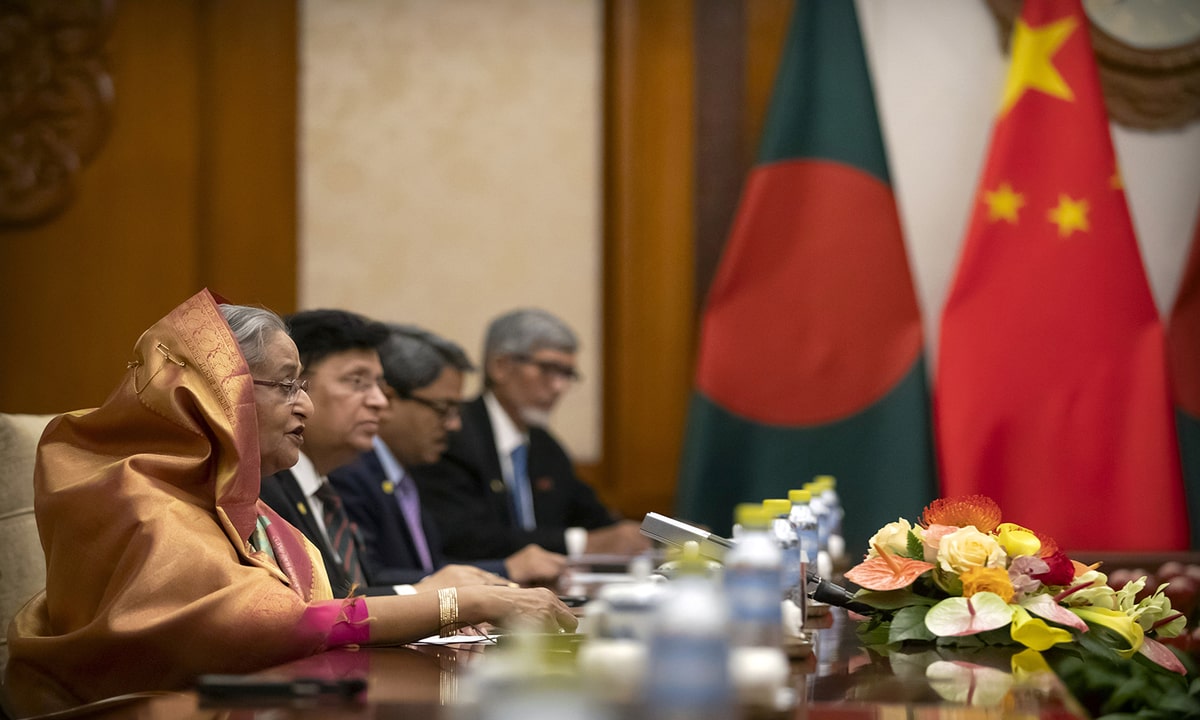GET IN TOUCH
- Please wait...

The COVID-19 pandemic has forced global trade to reach a standstill as countries struggle to provide for their own. Despite a global trade slump, China has recently opened new trade avenues for Bangladesh with lucrative incentives to stimulate trade.
China has announced a tariff exemption for 97% of Bangladeshi products to be effective from July 1, 2020. A total of 8,256 Bangladeshi products will come under this zero-tariff treatment and this exemption is perceived to boost trade between the two countries as Bangladesh previously enjoyed this privilege for only 3,095 of its products.[9] This exemption comes at the condition of a 40% value addition to these products.[10]
Besides trade benefits, China has announced that Bangladesh will get priority in case the Chinese are able to develop a successful vaccine for COVID-19. With 5 COVID-19 vaccines undergoing clinical trials in China as of June 2020, this declaration comes as a sign of goodwill for Bangladesh.
These new deals may come with the potential to help Bangladesh to soften the blow from the pandemic.Before the details on the deal are publicized, it is worthwhile to look at the current trade relationship with China, and analyze which sectors will be most benefited from the deal.
From the ancient silk roads to modern day diplomatic ties, China and Bangladesh have been in trade relationships for a very long time. As official ties began in 1975, the China-Bengal relationship has only gotten stronger over time and is on the verge of a new transformation due to new lofty policies from the Chinese.
In 2018, about 32.7% of the total imports of Bangladesh were from China, making it the largest source of imports followed by India (15.8%). The top imports are nuclear machinery, cotton, electrical equipment, man-made staple fibers and knitted or crocheted fabrics. Besides the items mentioned in the pie chart, Bangladesh also imports iron and steel, plastic, fertilizers, organic chemicals, paper and paperboard, ships, boats and floating structure and articles of Iron and Steel. Chinese imports are the fastest growing in Bangladesh with an 82.1% growth from 2013 to 2018.[1]

Trade between Bangladesh and China is highly skewed towards imports from China. This deficit is growing day by day as new technological developments and cheaper prices push up the demand of Chinese products.

The trade deficit between Bangladesh and China stood at an all time high of 12,808 USD Million in FY-2019. The growth rate of the trade deficit had been the highest in FY15-16 and FY 17-18 both at 19%.
Both nations often exchange high-level visits and have solidified their bond over time. There are several bilateral agreements in place that boost trade between the two countries.
Loan Agreements: Different loan agreements promise Chinese loans at lower prices in the form of grants, interest free loans, Government Concessional Loans (GLC) and Preferential Buyer’s Credit (PBC). These are channelized through agreements between the two countries. The terms for these development assistance loans are:

However, analyses of China’s top imports reveals , some areas of opportunity for Bangladesh, such as::
There are 2 things Bangladesh has to balance with respect to Chinese grants.
With the COVID-19 pandemic slowing down trade, the Chinese exemptions are a boost to the national economy and have the potential to minimize the short term damage at least.
However, the long term economic and diplomatic consequences of these opportunities are yet to be seen. But with proper steps and foresight, the country stands to gain a lot from these opportunities.
Eqra Mohammad Resalat Ohee, Content Writer at LightCastle Partners, has prepared the write-up. For further clarifications, contact here: [email protected].
The LightCastle team has been analyzing the macro and industry level picture and possible impacts wrought about by the Covid-19 crisis. Over the following days, we’ll be covering the major sectors shedding light on the possible short and long term ramifications of the global pandemic. Read all the articles in the series.
Our experts can help you solve your unique challenges
Stay up-to-date with our Thought Leadership and Insights